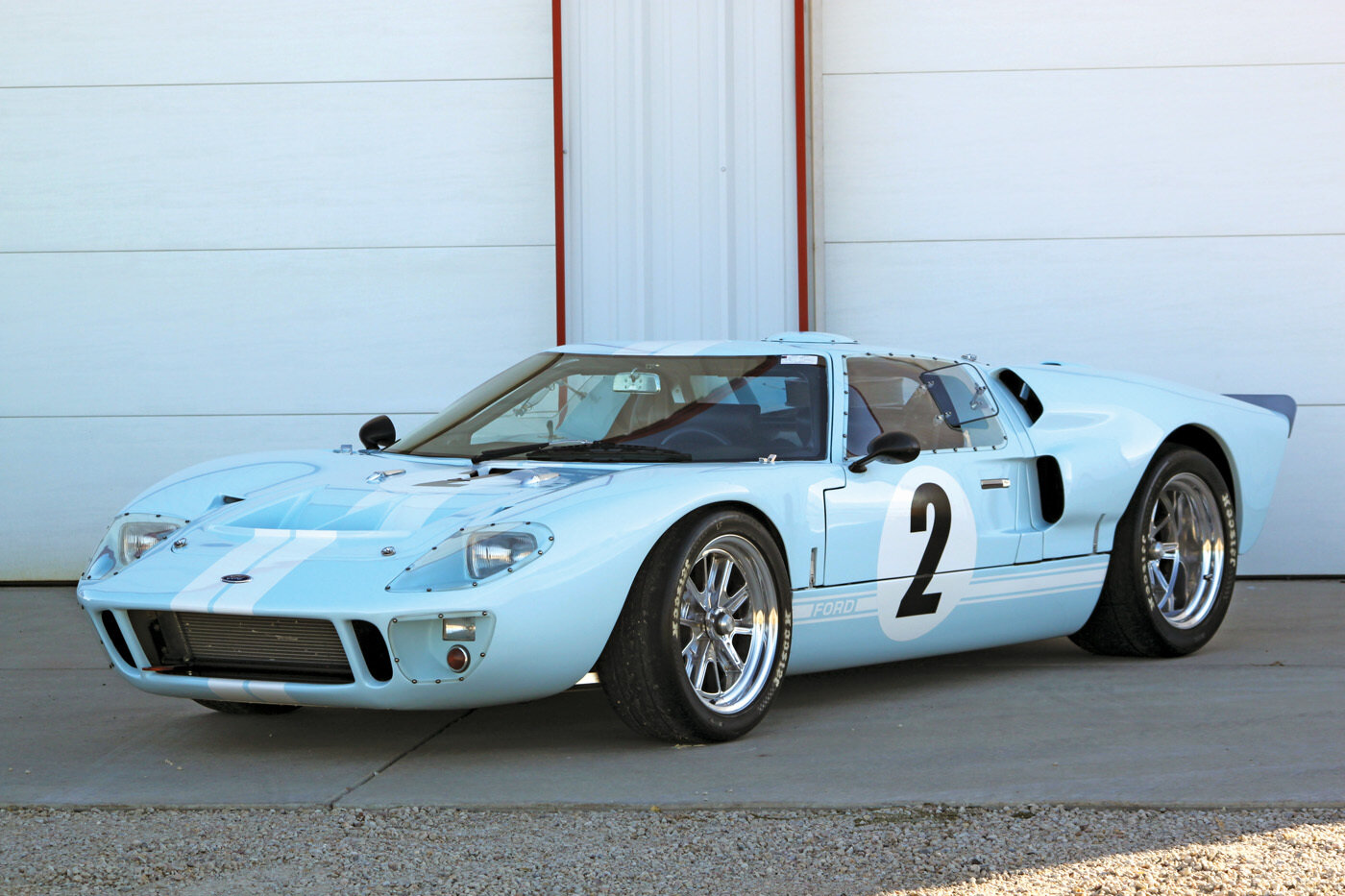
Anniversary Edition GT40
Story and photos by Jim Youngs
Last year marked the 50th anniversary of the storied Le Mans 1-2-3 finish of a trio of GT40s. The achievement at the 24-hour event heralded a unique milestone in automotive competition, that of blowing the doors off of Ferrari’s dominance in endurance racing. The Italians had won Le Mans six consecutive times from 1960-65. Not only was the ’66 Le Mans significant because three GT40s crossed the finish line in overall 1-2-3 rank, but it was also the first victory for an American manufacturer.
One of those cars, the second-place finisher driven by Ken Miles and Denis Hulme, served as the model for the GT40 seen here. Built by Miller Motorsports (MMS) in Erie, Colorado, the shop based this build on that baby blue car No. 1, with a few liberties taken for personal preferences.
The project started with Race Car Replicas’ aluminum monocoque chassis, fitted with a MkI-style front clamshell and a MkII rear clamshell, mostly because the builders just prefer the MkI nose. To those basic body components they also added some body scoops, original-style ducting and a front center nosepiece from Bill Hough of Norwell, Massachusetts, to round out the low and lean body.
Typical for MMS, the firm started at the wheels and worked upward in creating this unique car. The team chose 17-inch Shelby American Racing wheels from Vintage Wheel, in order to accommodate big six-piston Wilwood calipers at all four wheels. Speaking of wheels, they are wrapped with sticky Hoosier R-compound DOT race slicks.
To augment the RCR chassis, MMS built its own roll cage fabricated from 1.5-inch DOM steel tubing, the bars of which run along the tops of the pontoons and underneath the dash. The stout cage makes the car quite rigid, but still allows easy ingress and egress.
Added to the stock RCR suspension components, consisting of billet aluminum uprights and upper and lower control arms, Miller added NASCAR-style adjustable sway bars from Speedway Engineering. Additionally, the front suspension uprights were modified to accommodate MMS brake cooling ducts.
Since this car was sure to see considerable track time, the engine was built as a team effort between Miller Motorsports, American Automotive Machine and Craft Performance. It started life in 1969 as a Ford 351 Windsor block, bored and stroked to 427 cubic inches, and features a Comp cam with full mechanical rollers, lifters and forged pistons and crank.
The block is fitted with Craft’s custom-machined AFR 225 Stage 3 heads. Starting with a raw casting, Craft does a full CNC porting and bowl blending. The engine has a full-race setup with 13:1 compression, MSD ignition, Canton road-race oil pan, billet stud girdle and oil cooler. Topping the mill is an Edelbrock Super Victor manifold and a Holley 850 double pumper racing carburetor. MMS figures the horsepower right at 700.
The “bundle of snakes” exhaust was built in-house with 2-inch primary tubes to be as close to the original as possible. The engine is backed by a ZF transaxle built by Pantera Performance in Castle Rock, Colorado.
The GT40’s interior is fitted with custom seats covered in black leather and venting grommets. A little carpeting is included to cover some of the raw aluminum of the pontoons. Classic Instruments gauges are mounted across the fiberglass dash along with the appropriate switch gear, all labeled for quick reference. A modified Haywire seven-circuit harness was used to connect all the electrics. A complete Halon fire extinguishing system was installed for safety. Fresh air is provided through dash vents and opening side screens.
All of the car’s NACA ducts and vents are fully functional, including the front center section that was cut apart and modified to allow for better airflow through the radiator and to increase downforce on the front of the car. The front clamshell is removable, like the original, to allow for easy access to all components.
The rear clamshell was reworked a bit to include a Heim joint hinge system that is fixed to the car. The rear snorkel scoops feed air to the rear brakes. No one has been able to identify the purpose of the little center rear scoop with the Lexan window, but since it was on the original car it is included here.
All fiberglass and paint work on this car was done in-house and features Duraglas and PPG products. It was painted with a light blue basecoat covered by clearcoat. The graphics are laid on top of the basecoat with lots of clear covering them. The paint scheme matches the original Le Mans car with the exception of eliminating orange sections atop the fenders.
Like all of the specialty cars Miller Motorsports builds, this one is a well-built beauty bristling with incredible attention to detail and lots of uncommon custom touches. All in all, it’s a fitting tribute to one of three hugely significant race cars.
This story has been updated to correct the reported finishers in the 1966 Le Mans race. The third-place finisher of the race was the #5 Holman and Moody car driven by Bucknum and Hutcherson, which wore gold and white paint. The light blue #1 car was driven by Miles and Hulme and finished in second place. The first place finisher was the black #2 car driven by McLaren and Amon. The car shown here replicates the Shelby American Miles and Hulme car, not the Holman and Moody car driven by Bucknum and Hutcherson as previously reported.

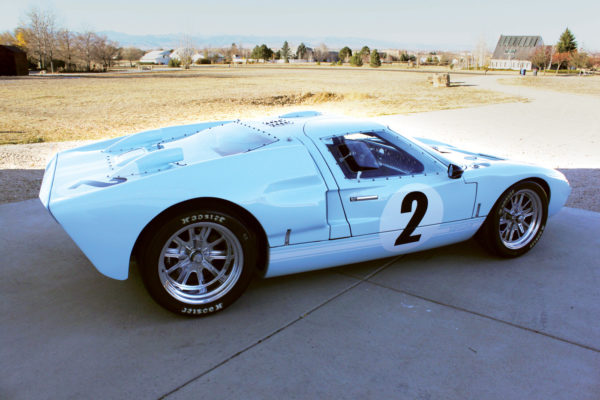
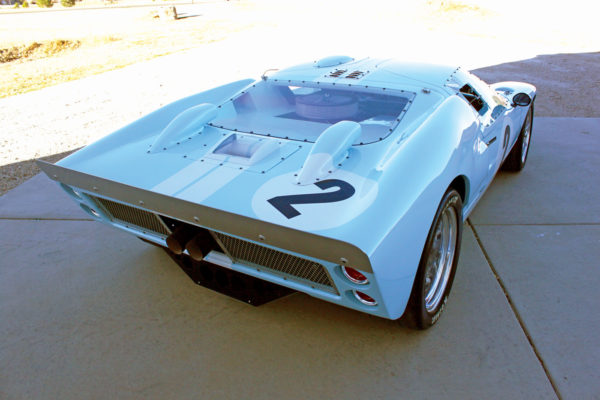
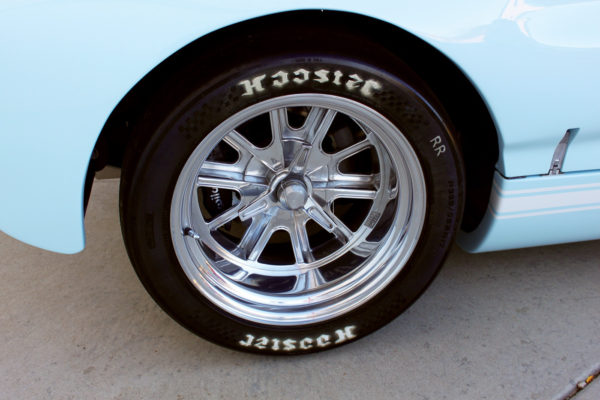
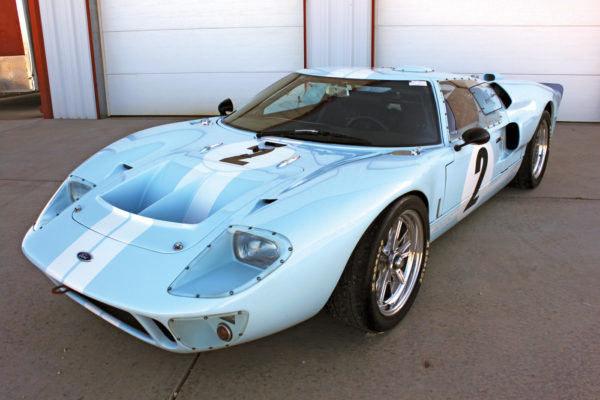
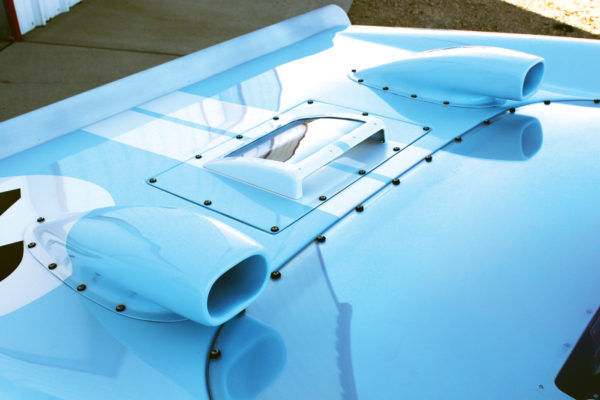
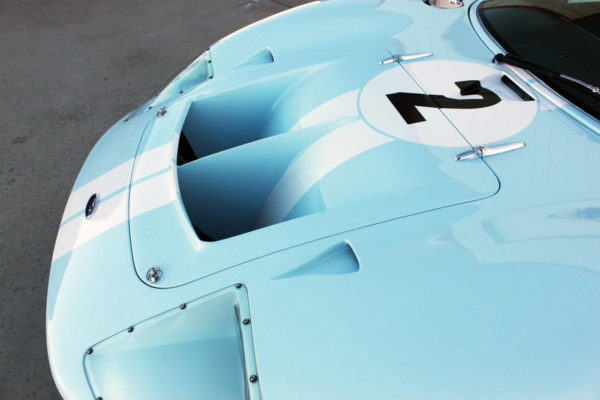
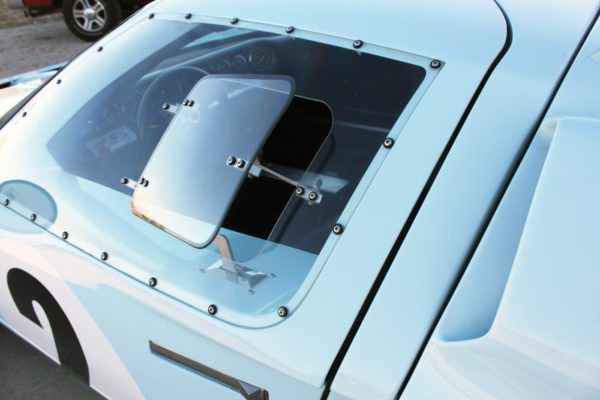
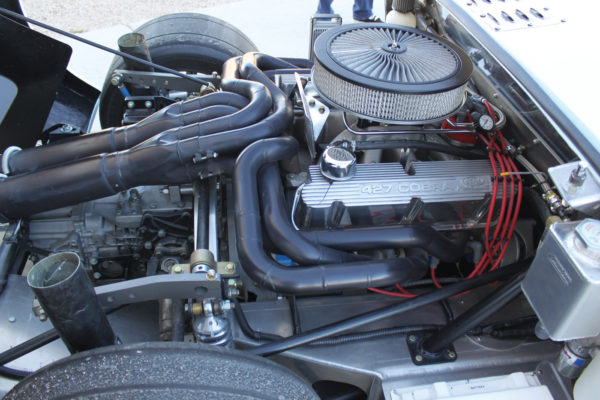
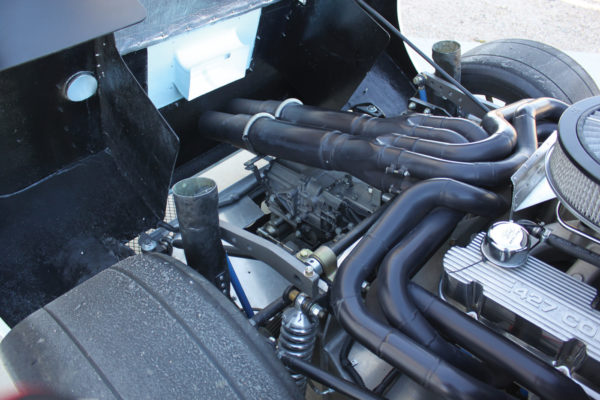
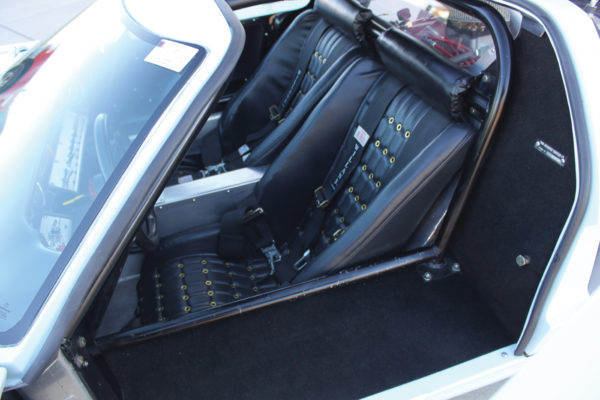
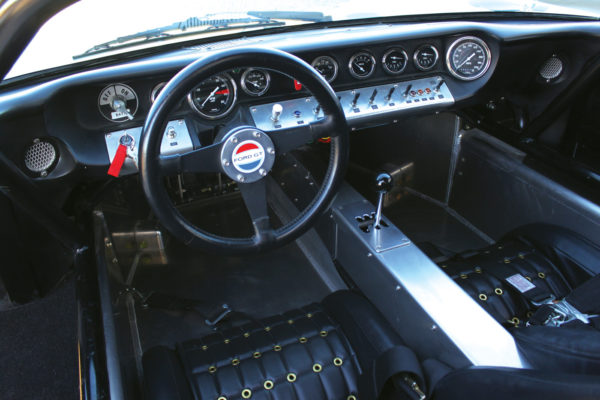
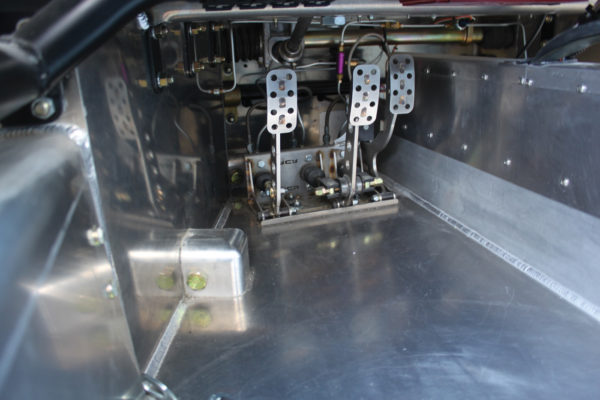
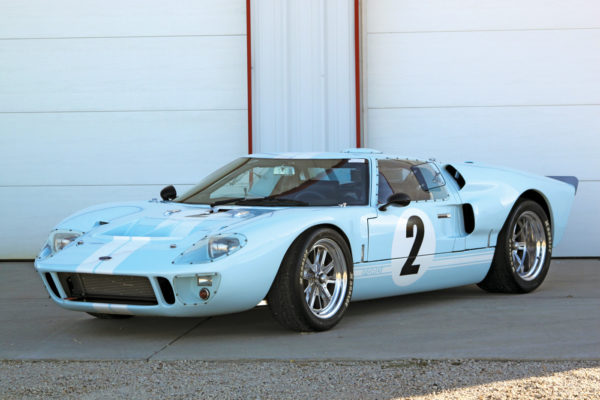
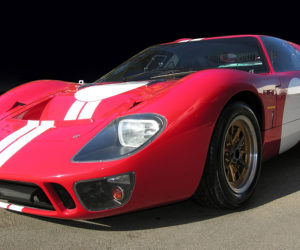
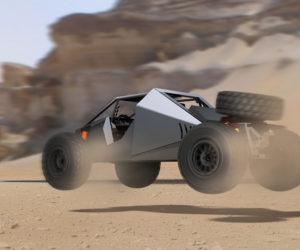
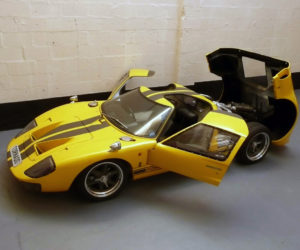
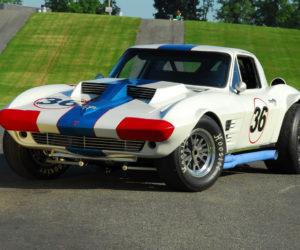
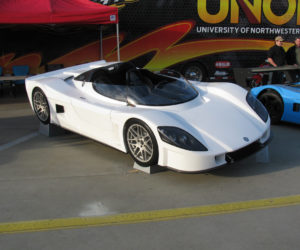
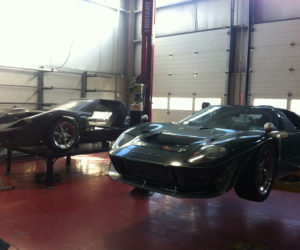




Comments for: Anniversary Edition
comments powered by Disqus